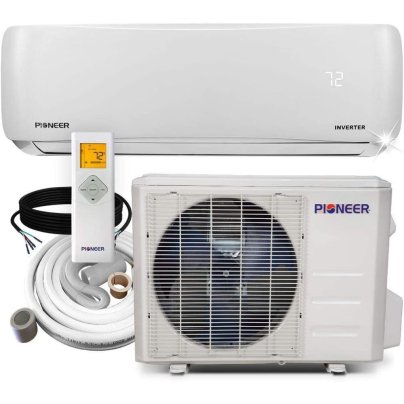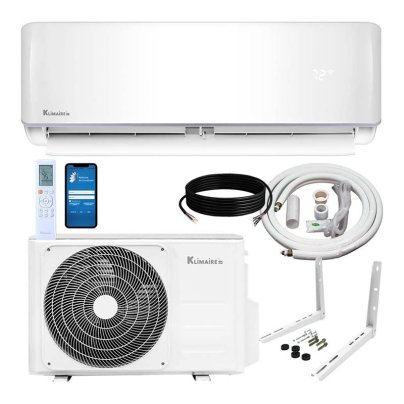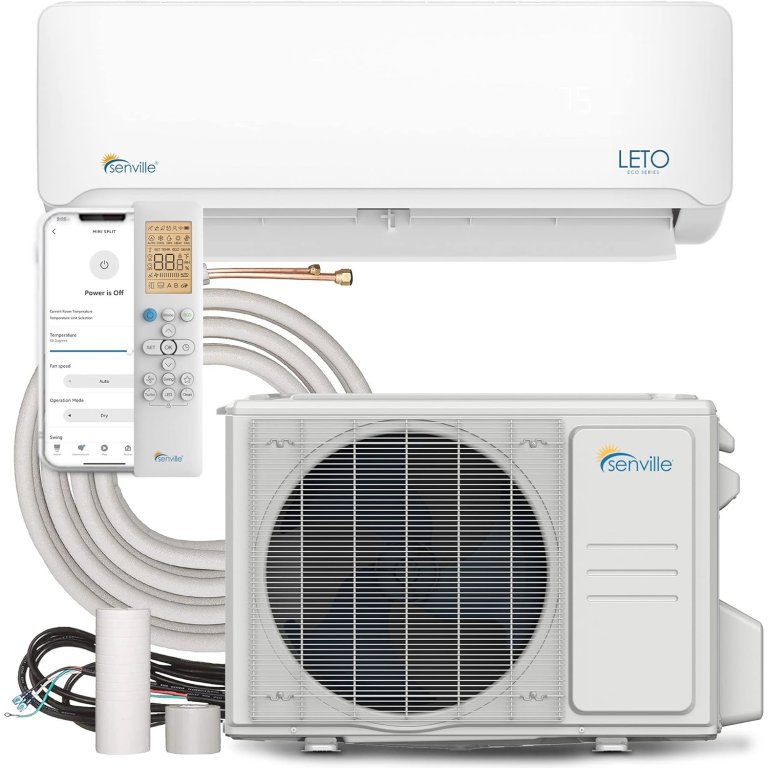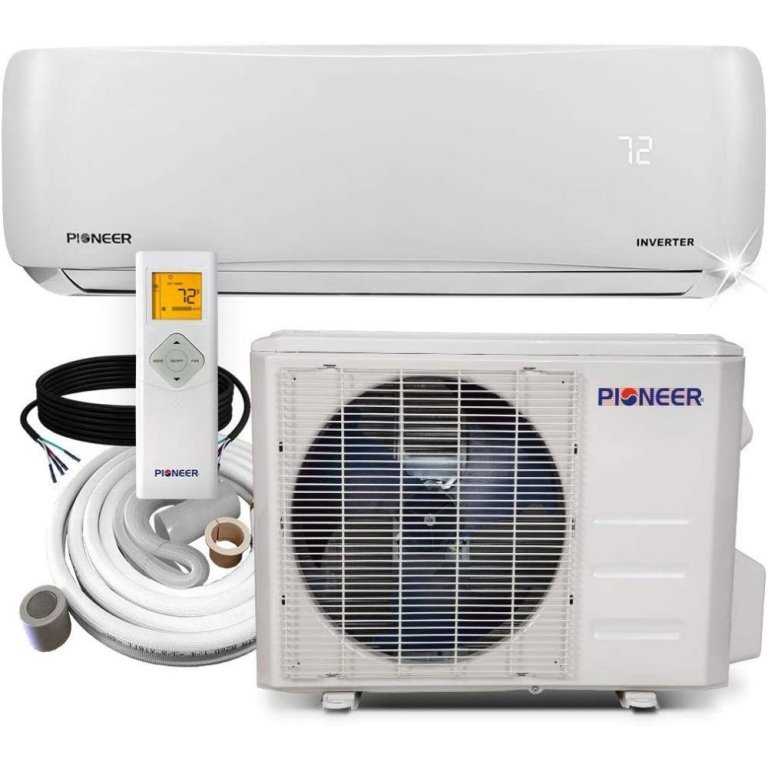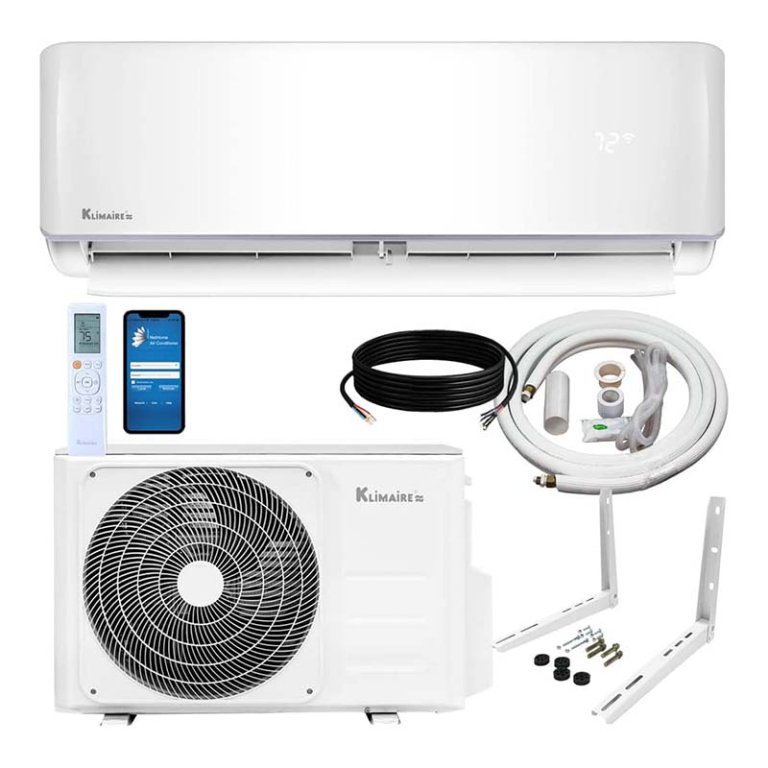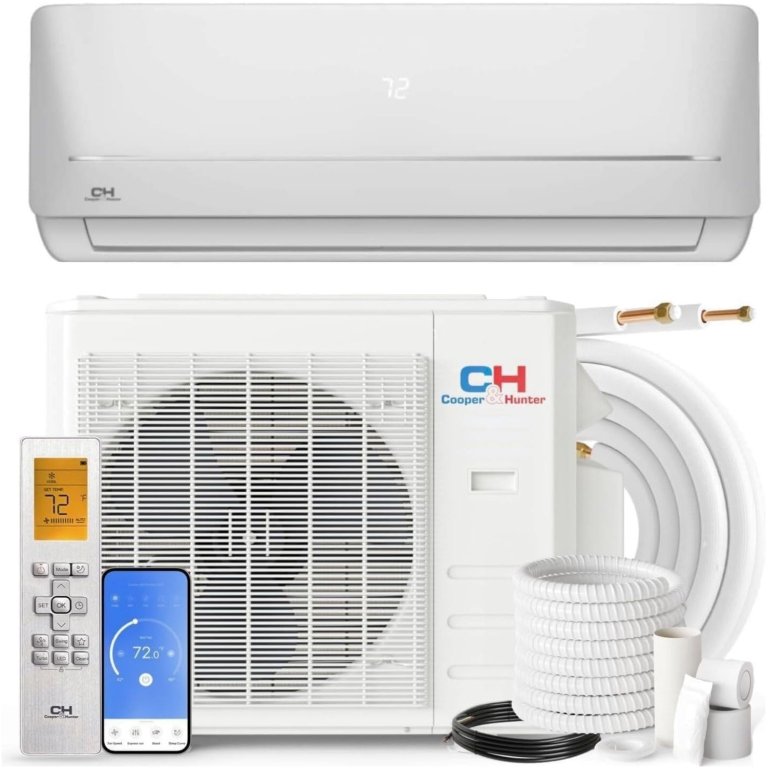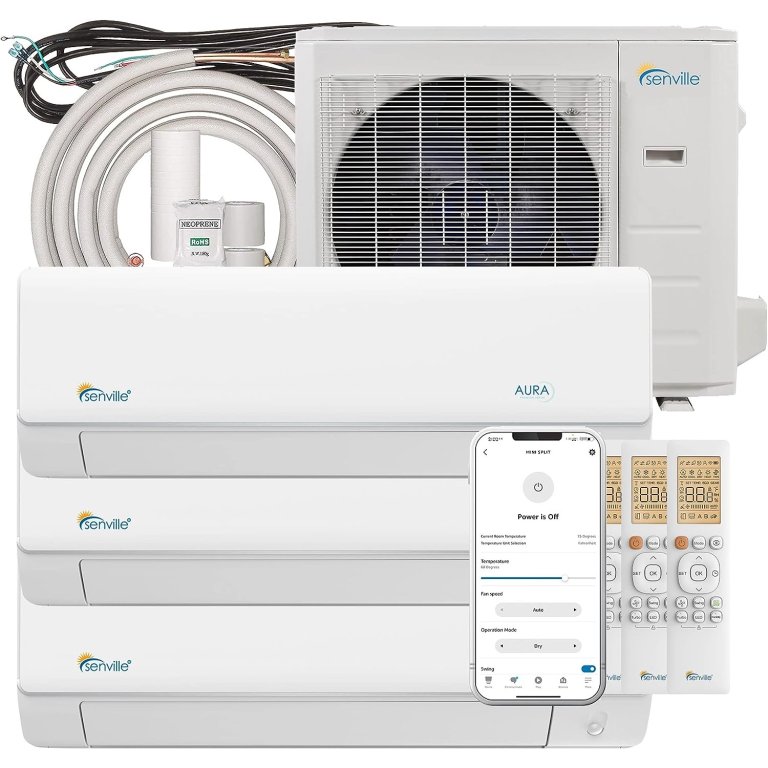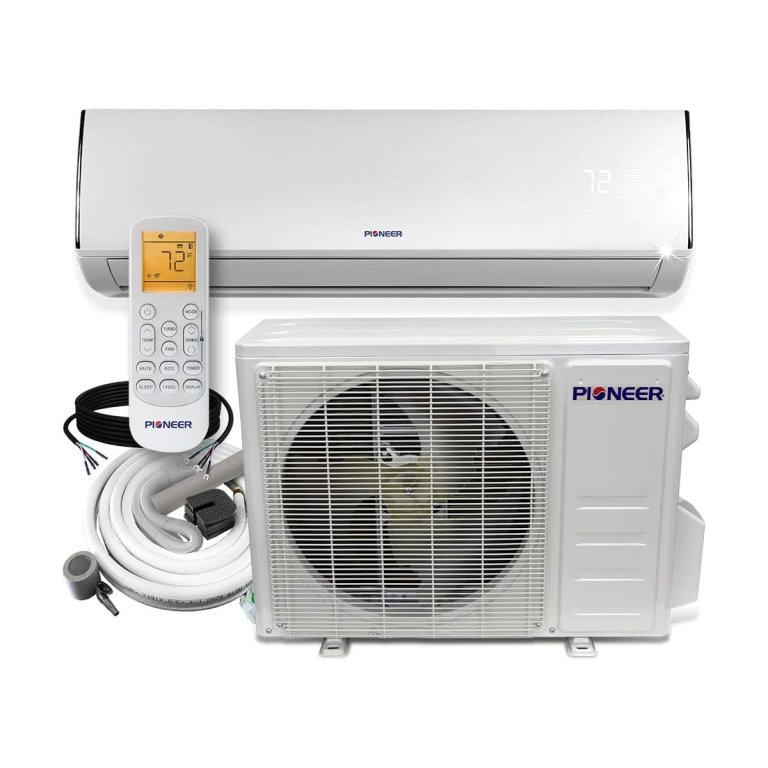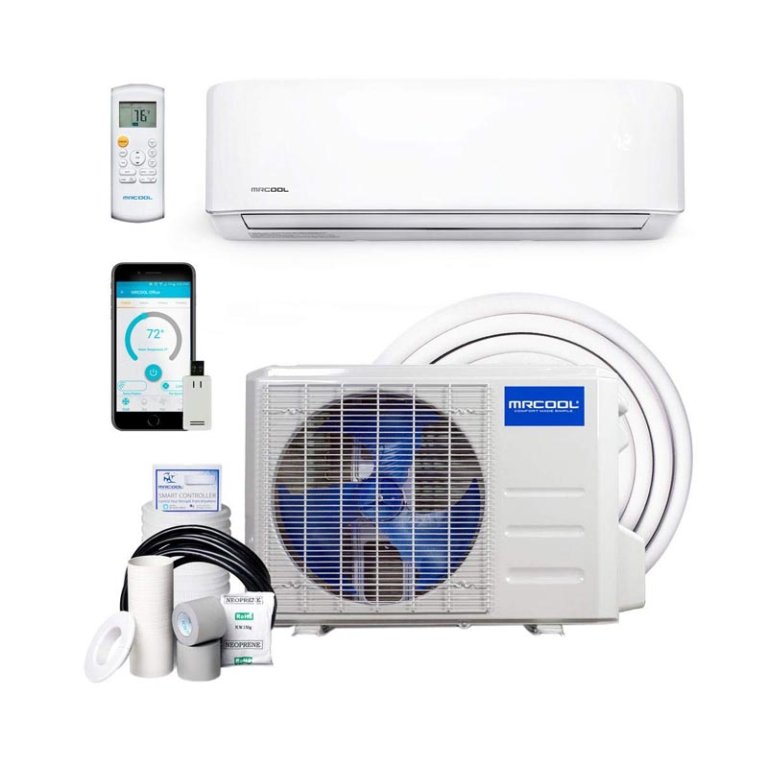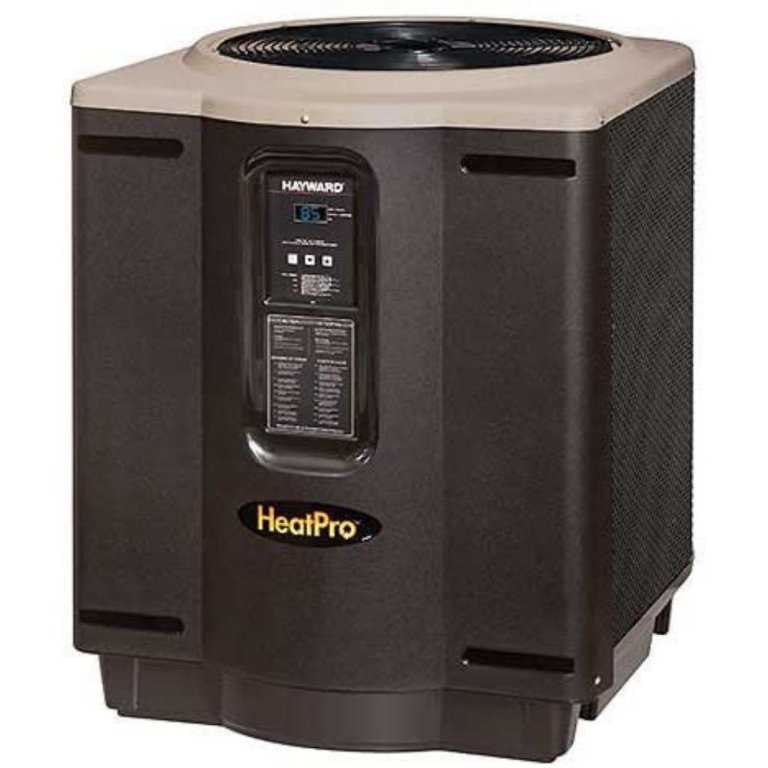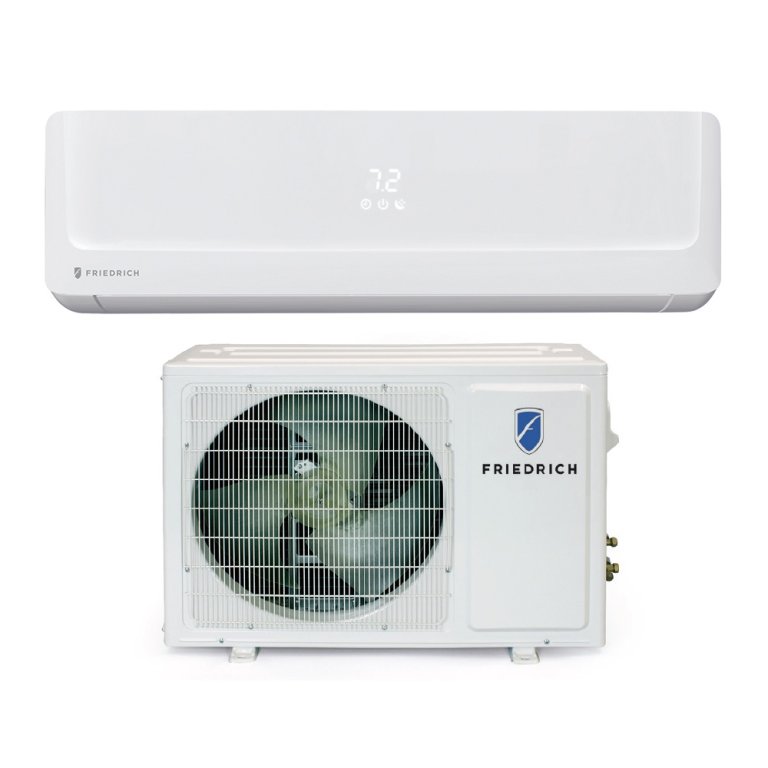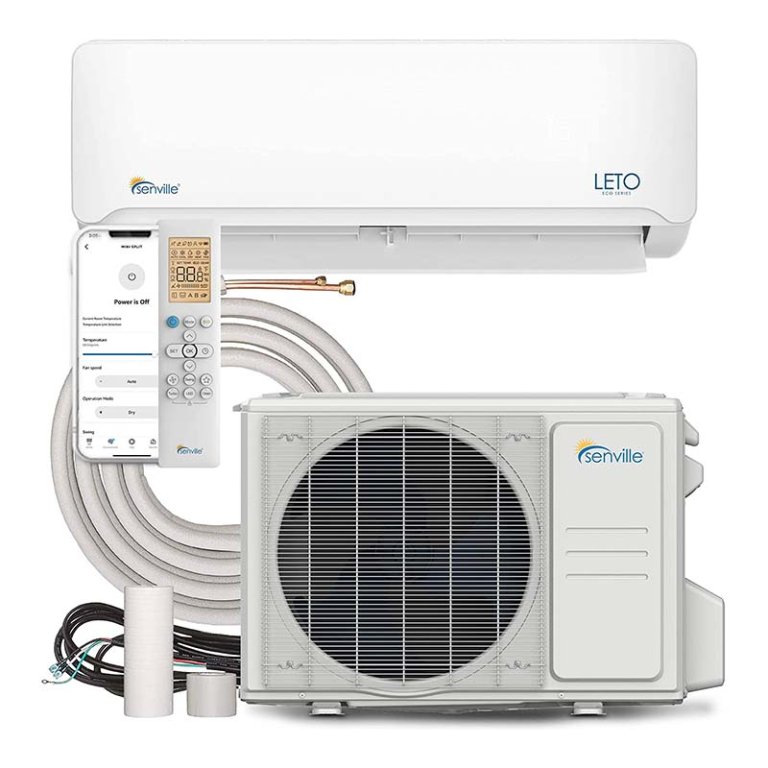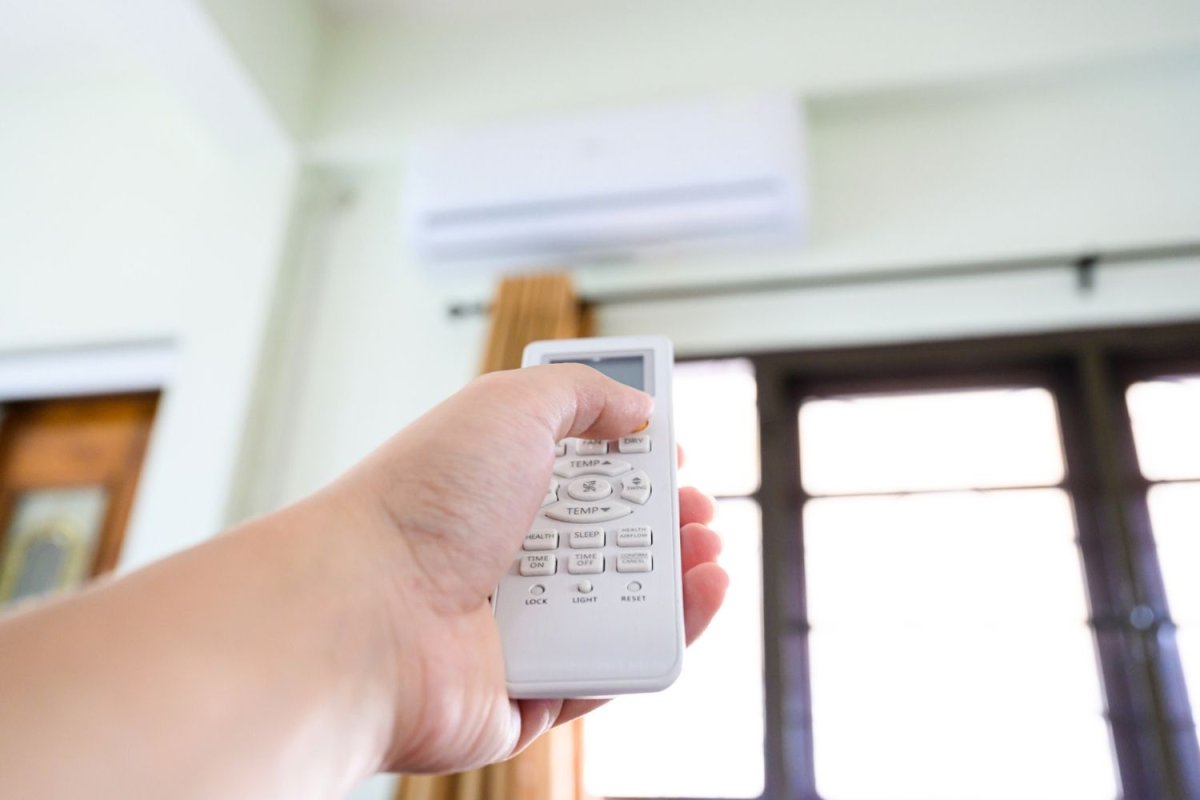
We may earn revenue from the products available on this page and participate in affiliate programs. Learn More ›

I started installing heat pumps around 11 years ago and have developed a certain bias toward them. Compared with traditional heating, ventilation, and air conditioning (HVAC) systems that use a furnace for heat and an air conditioner for cooling, heat pumps can offer significant energy savings that results in lower household energy bills.
Heat pumps are sometimes also called heat exchangers because that’s effectively how they condition a space. Home heat pumps use a refrigerant and a compressor to extract heat from outside—even when it feels quite cool—and pump that warmth into your home. In the summer, they provide effective air conditioning and help reduce humidity. Other types of heat pumps are specifically designed for household hot water or pool heating.
To compile this in-depth heat pump guide, I researched more than three dozen products to curate a list of top picks based on customer satisfaction, product efficacy, and value. I also did a deep dive into heat pump types, capacities, and efficiency ratings before choosing the Senville 24,000-BTU Mini-Split Heat Pump as my top pick for its efficiency, powerful output, and quiet operation. For some circumstances, however, another model may be a better option. Keep reading for a full breakdown of 10 of the best heat pumps on the market.
- BEST OVERALL: Senville 24,000-BTU Mini-Split Heat Pump
↓ Jump to Review - RUNNER-UP: Pioneer 18,000-BTU Mini-Split Heat Pump
↓ Jump to Review - BEST BANG FOR THE BUCK: Klimaire 12,000-BTU Ductless Mini-Split Heat Pump
↓ Jump to Review - BEST WITH FILTER: Cooper & Hunter 18,000-BTU Mini-Split Heat Pump
↓ Jump to Review - BEST MULTIPLE-SPACE: Senville 36,000-BTU Tri-Zone Mini-Split Heat Pump
↓ Jump to Review - BEST SMALL-SPACE: Pioneer Diamante 9,000-BTU Mini-Split Heat Pump
↓ Jump to Review - BEST WI-FI COMPATIBLE: MrCool DIY 36,000-BTU Ductless Mini-Split Heat Pump
↓ Jump to Review - BEST FOR POOLS: Hayward HeatPro 90,000- BTU Inground Pool Heat Pump
↓ Jump to Review - MOST EFFICIENT: Friedrich 18,000-BTU Single-Zone Mini-Split Heat Pump
↓ Jump to Review - BEST FOR SMART HOMES: Senville 12,000-BTU Mini-Split Air Conditioner
↓ Jump to Review
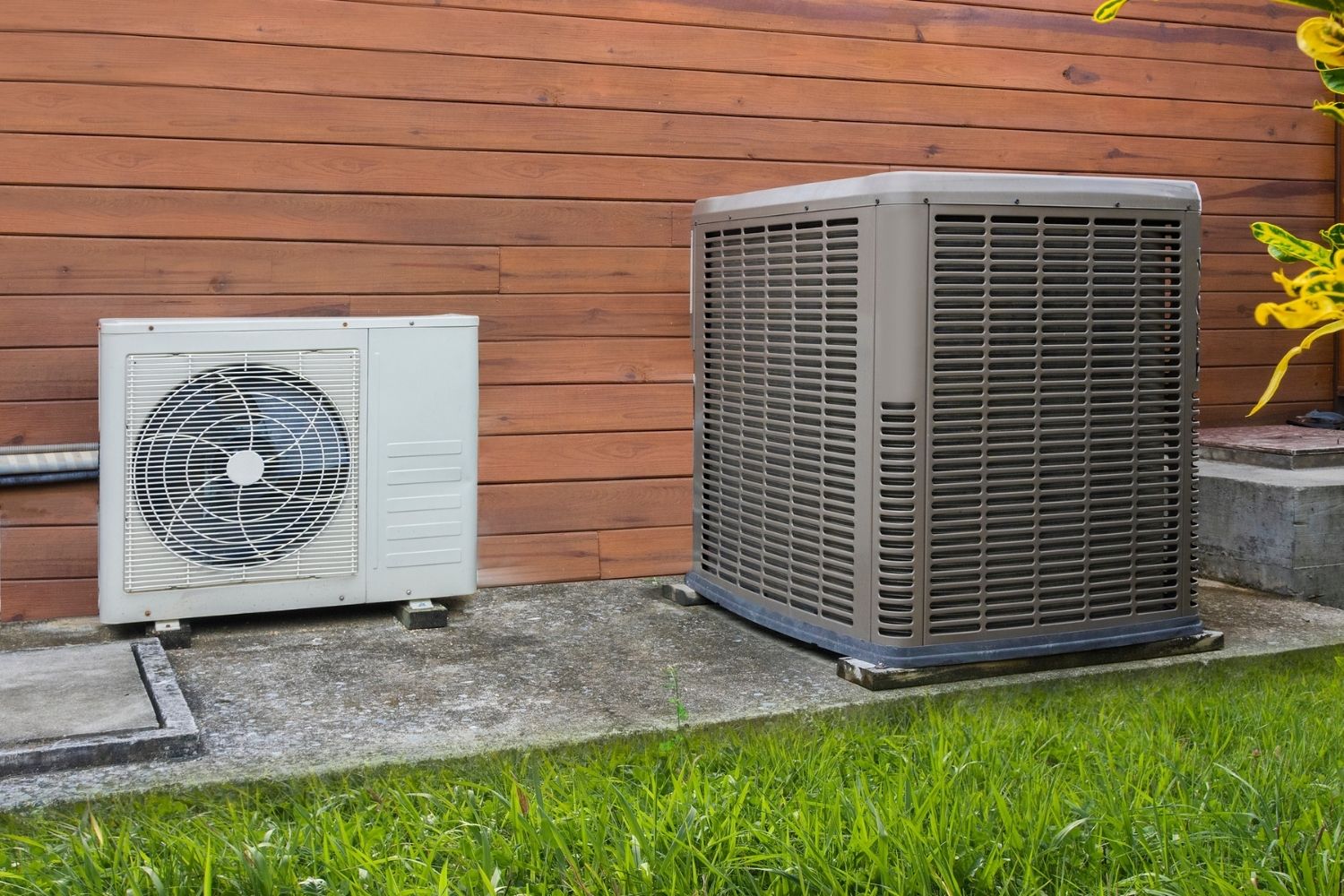
Our Top Picks
To help you in your search for a suitable option, we gathered the best heat pumps for a variety of categories. After our list of top picks, we cover the types of heat pumps and their various features to make it easier to accurately assess the best heat pump for the room and purpose you have in mind.
Best Overall
Senville 24,000-BTU Mini-Split Heat Pump
What We Like
- DC inverter reduces energy consumption
- Powerful output for heating and cooling
- Produces just 35 decibels of sound on low
What We Don’t Like
- Airflow only goes up and down
Product Specs
- Type: Split-ductless
- Heating power: 24,000 BTUs
- Coverage: 1,000 to 1,250 square feet
- Noise level: 35 to 45.5 decibels (indoor unit), 60 decibels (outdoor unit)
Those looking to combine powerful heating and cooling with efficient operation will appreciate this 24,000-BTU heat pump from Senville. Its DC inverter heat pump technology minimizes energy consumption, giving it a seasonal energy efficiency ratio (SEER) of 18. It’s also super quiet, with the indoor portion operating at just 35 decibels on low and 45.5 decibels on high. A decibel reading of 60 for the outdoor heat pump portion means its maximum volume is still only as loud as a normal conversation.
This unit comes with everything you need for DIY installation, though beginners may prefer hiring a professional since mini-split installation can be tricky. Once the heat pump is in, it’s easy to adjust via the included remote or with Alexa for voice-control commands. Just be thoughtful about where you choose to place it: Airflow adjustments move up and down only, not side to side.
Get the Senville 24,000-BTU heat pump at Amazon, Walmart, or Senville.
Runner-Up
Pioneer 18,000-BTU Mini-Split Heat Pump
What We Like
- Meets AHRI independent testing and certification standards
- Quiet operation, even on high settings
- Includes electrical wiring and copper pipe for installation
What We Don’t Like
- As with all mini-splits, DIY installation may be tricky
Product Specs
- Type: Split-ductless
- Heating power: 18,000 BTUs
- Coverage: 400 to 650 square feet
- Noise level: 30 to 43.5 decibels (indoor unit), 57 decibels (outdoor unit)
Pioneer is one of the top names in ductless mini-split heat pumps, and this model offers 18,000 BTUs, making it great for a large bedroom or even a small studio apartment. Its SEER rating of 19 and a class-leading 10 HSPF (heating seasonal performance factor) meet independent testing and certification standards set forth by the Air Conditioning, Heating, and Refrigeration Institute (AHRI). The appliance is also very quiet, with the indoor unit producing just 30 to 43.5 decibels and the outdoor unit reaching only 57 decibels.
We especially love this heat pump’s clever “Follow Me” feature that uses feedback from a sensor in the remote control to adjust heating or cooling in that location rather than at the air handler itself. The well-thought-out installation kit includes electrical wiring and copper pipe, and the company also offers free technical support. Given its high performance and comprehensive feature set, this unit from Pioneer is a remarkably good value.
Get the Pioneer wall-mount heat pump at Amazon.
Best Bang for the Buck
Klimaire 12,000-BTU Ductless Mini-Split Heat Pump
What We Like
- Affordable option for spaces up to 550 square feet
- AHRI certified with SEER rating of 19 and 9.5 HSPF
- Quiet and nondisruptive; indoor maximum of 38 decibels
What We Don’t Like
- Lower BTUs won’t be enough for big rooms
Product Specs
- Type: Split-ductless
- Heating power: 12,000 BTUs
- Coverage: Up to 550 square feet
- Noise level: 24 to 38 decibels (indoor unit), 55 decibels (outdoor unit)
The 12,000-BTU Klimaire is designed for rooms up to 550 square feet. Besides suiting smaller spaces, it’s an ideal cost-effective extension option for an existing HVAC system. The SEER rating is 19 with 9.5 HSPF, and the air handler runs as low as 24 decibels, so it won’t disturb sleepers.
Although very competitively priced for this type of electric heating, the AHRI-certified Klimaire is not short on features. Its built-in compressor heater allows it to operate when the outdoor temperature is as low as 5 degrees Fahrenheit. Also, its “Home Away” setting ensures the room maintains a constant 46 degrees Fahrenheit while the house is unattended.
Get the Klimaire heat pump at Amazon or Klimaire.
Best With Filter
Cooper & Hunter 18,000-BTU Mini-Split Heat Pump
What We Like
- Both AHRI certified and ETL listed
- Wi-Fi compatibility (with purchase of USB adapter)
- Filter helps remove dust and harmful airborne particles
What We Don’t Like
- Smaller coverage area than other 18,000-BTU models
Product Specs
- Type: Split-ductless
- Heating power: 18,000 BTUs
- Coverage: 258.33 square feet to 376.74 square feet
- Noise level: 30.5 to 43 decibels (indoor unit), 57.5 decibels (outdoor unit)
Not only are the 18,000-BTU Cooper & Hunter ductless mini-split system’s SEER of 19 and HSFP of 10 well in excess of federal recommendations, but its pricing is competitive, too. At 57.5 decibels, the outdoor unit isn’t the quietest ductless mini-split system on our list, but the noise level isn’t excessive. The indoor unit runs at a reasonable 30.5 to 43 decibels, depending on its setting.
Like other options, the Cooper & Hunter heat pump is AHRI certified and Electrical Testing Laboratories (ETL) listed. What makes this unit unique is its cold catalyst filter, which helps remove dust particles and absorbs harmful airborne benzene and ammonia. The appliance is also Wi-Fi ready with the purchase of a USB adapter. While everything is provided for DIY fitting, professional installation is required for warranty compliance.
Get the Cooper & Hunter heat pump at Amazon.
Best Multi-Space
Senville 36,000-BTU Tri-Zone Mini-Split Heat Pump
What We Like
- High capacity provides heat for multiple spaces
- Each air handler allows customized control
- Features self-cleaning, leak detection, and diagnostics functions
What We Don’t Like
- Professional installation is strongly advised
Product Specs
- Type: Split-ductless
- Heating power: 36,000 BTUs total, 12,000 BTUs per unit
- Coverage: 1,150 to 1,350 square feet per unit
- Noise level: 23.5 to 38 decibels (indoor unit), 63 decibels (outdoor unit)
While generally used as a single-room solution, more powerful split-ductless heat pumps like this 36,000-BTU model from Senville can supply three different air handlers at the same time, giving it the capacity to heat (or cool) multiple spaces. Each wall-mounted unit has its own remote control, allowing you to use completely independent settings for each room.
Simply because it’s powerful and customizable doesn’t mean it’s inefficient. It boasts an impressive 23 SEER and 11.3 HSPF. You can control it via the Alexa app or, if you have an Amazon Echo device, through voice activation. While this tri-zone model is technically similar to single-room mini-splits and comes with a full DIY installation kit, the manufacturer does professional fitting for this unit.
Get the Senville 36,000-BTU heat pump at Amazon.
Best Small-Space
Pioneer Diamante 9,000-BTU Mini-Split Heat Pump
What We Like
- Ideal for extra bedrooms or other home extensions
- Straightforward DIY installation and comprehensive accessory kit
- Automated sweeping louvers
What We Don’t Like
- Some older reviews mention operational issues
Product Specs
- Type: Split-ductless
- Heating power: 10,000 BTUs
- Coverage: 100 to 350 square feet
- Noise level: 32 to 38 decibels (indoor unit), 50 decibels (outdoor unit)
At 9,000 BTUs, the Pioneer Diamante is intended for additions like bedrooms above a garage or small guesthouses built in yards. The unit comes with a budget-friendly price tag, and running this small heat pump will typically be far more economical than extending existing HVAC.
The Pioneer Diamante is described as 9,000 BTUs, but its heat output is actually 10,000 BTUs. It’s rated at 20 SEER and 10.5 HSPF and has low indoor and outdoor noise levels. Unlike other options on our list, the Diamante is intended for DIY installation and includes a full fitting kit. A Wi-Fi module is available, though this costs extra.
Get the Pioneer Diamante heat pump at Amazon, The Home Depot, or Pioneer.
Best Wi-Fi Compatible
MrCool DIY 36,000-BTU Ductless Mini-Split Heat Pump
What We Like
- Connects to Alexa and Google Assistant
- Comprehensive installation kit included
- Retains previous settings after a power outage
What We Don’t Like
- DIY installation requires some electrical know-how
Product Specs
- Type: Split-ductless
- Heating power: 36,000 BTUs
- Coverage: Up to 1,500 square feet
- Noise level: 35 to 52 decibels (indoor unit), 63 decibels (outdoor unit)
MrCool produces a range of split-ductless heat pumps, and this powerful model is rated for a 36,000-BTU output. As one of the more DIY-friendly models on our list, it includes a comprehensive installation kit with 25 feet of cable, connectors, and a charged air handler. That said, some reviewers still mention that you need some electrical experience if you don’t have a dedicated circuit.
The standout feature of the MrCool is its compatibility with Wi-Fi control in addition to its standard remote. Its free app lets you monitor and control heating or cooling via smartphone, and it also integrates with Alexa and Google Assistant smart-home systems. We also really like that this unit remembers previous settings and restarts after a power outage.
Get the MrCool heat pump at Amazon, or HVACDirect.com.
Best for Pools
Hayward HeatPro 90,000-BTU Inground Pool Heat Pump
What We Like
- Heat exchanger uses titanium for increased efficiency
- Digital control panel is easy to use
- UV-treated polypropylene body and rust-resistant stainless steel fittings
What We Don’t Like
- May struggle to keep up in very cold weather
Product Specs
- Type: Pool pump
- Heating power: 90,000 BTUs
- Coverage: Not specified
- Noise level: Not specified
Pump performance for a pool heater is described using Coefficient of Performance (COP) rather than SEER and HSPF. The use of titanium in the heat exchanger maximizes transfer efficiency, and this 90,000-BTU Hayward is rated at 5.7, which is well above the federal recommended minimum of 3.1.
The Hayward HeatPro has a tough ultraviolet-treated polypropylene main body with rust-resistant stainless steel fittings, ideal for outdoor pool use. Its water flow rate is a versatile range of 30 to 75 gallons per minute, making it easier to match to an appropriate water pump. The heater’s front-facing digital control provides convenient access for quick and easy adjustments.
Get the Hayward pool heat pump at Amazon, Walmart, or Leslie’s.
Most Efficient
Friedrich 18,000-BTU Single-Zone Mini-Split Heat Pump
What We Like
- Impressive 21 SEER2 rating
- Both vertical and horizontal louvers
- Effective dehumidifier function for humid climates
What We Don’t Like
- Professional installation required
Product Specs
- Type: Split-ductless
- Heating power: 18,000
- Coverage: Not specified
- Noise level: 36 to 48 decibels (indoor unit), 58 decibels (outdoor unit)
This heat pump from Friedrich has an Energy Star certification and is rated a 21 on the SEER2 scale, which is an updated version of the SEER scale by which our other picks are measured. It’s also ahead of the curve in features, boasting horizontal and vertical louvers, a dry mode for dehumidification, and a remarkably quiet operation of only 48 decibels on max speed. Not only that, its Smart button automatically adjusts heating, cooling, and dehumidifying settings based on the temperature of the room. Though this unit requires professional installation, Friedrich’s FastPro technology helps HVAC techs get the job done quicker, saving you money.
What our tester says: Glenda Taylor, a Bob Vila staff writer and product tester, was impressed by both the heating and cooling aspects of this unit in her Friedrich heat pump review. “By the time the mini split air conditioner was up and running, it was mid-afternoon, and everyone in the building was sweating. Within 15 minutes of starting the Friedrich, we could all feel a slight drop in temperature. At one hour, the temperature had dropped to a comfortable 70 degrees.”
Get the Friedrich heat pump at ToolHomeSupply.
Best For Smart Homes
Senville 12,000-BTU Mini-Split Air Conditioner
What We Like
- Produces just 22.5 decibels on low
- Far more economical than extending HVAC
- Comprehensive installation kit and technical support
What We Don’t Like
- 12,000 BTUs will not be suitable for larger spaces
Product Specs
- Type: Split-ductless
- Heating power: 12,000 BTUs
- Coverage: 450 to 750 square feet
- Noise level: 22.5 to 37 decibels (indoor unit), 53.5 decibels (outdoor unit)
The 12,000-BTU Senville supports Amazon Alexa for integration with smart-home systems. Add an Echo Dot (if not already in use), and you can even control it with voice activation. The free smartphone app also gives owners the opportunity to monitor and control the device from virtually anywhere. With a SEER rating of 20.5 and 9.5 HSPF, it delivers performance equal to or better than anything in its class. At just 22.5 decibels on the low setting and up to 37 decibels on high, it’s comfortably quiet, too.
Though a full kit is included and technical support is offered, professional installation is required to validate the warranty. Nevertheless, the competitive purchase price will go a long way toward compensating for these costs. Those who need a heat pump for a larger area might consider another high-efficiency heat pump from Senville’s range.
Get the Senville 12,000-BTU heat pump at Amazon, Walmart, or Senville.
Jump to Our Top Picks
How We Chose the Best Heat Pumps

I have personally bought heat pumps from several leading manufacturers, so I have my own preferences. However, to ensure a balanced report, I worked with the Bob Vila team and researched the best heat pump systems in a variety of categories. The resulting list factors in heating power, coverage, noise level, heating and cooling functions, and special features offered by the top heat pump brands. We also focused on models with high customer satisfaction when looking at the most efficient way to heat a home.
The heat pumps on the list offer 12,000 to 36,000 British thermal units (BTUs) of heating power, with the exception of the pool pump. These units heat spaces from 258.33 to 1,500 square feet to accommodate different user needs and spaces. They also have low operating volumes and work as both heating and cooling systems. We also considered units with special features like Wi-Fi controllability, remote controls, and smart-home integration.
What to Consider When Choosing a Heat Pump
Beyond the common types of heat pumps, there are more details to consider. The following includes some of the most important heat pump features that maximize performance and energy savings, helping you avoid common home heating mistakes.
Types of Heat Pumps
Heat pumps can be divided into three main types: air source, split-ductless, and geothermal. While all types use the same basic principle of heat exchange to warm or cool a space, understanding their different strengths helps narrow the choices for the best heat pump for a particular home. Depending on where you live, different types of heat pumps may also be eligible for tax credits.
Air Source
Air source heat pumps sit outside the home and use an internal ducting system, much like other outdoor HVAC systems that provide hot or cool air inside. If you’re switching from an electric or gas furnace to a heat pump, it’s likely you can use part of the existing furnace for installation.
An air-source heat pump can also provide hot water, but it’s important to note that an air-source heat pump water heater is not the same as a heating and cooling heat pump, so two systems are needed if buyers want both functions. (See our picks for the best heat pump water heaters here.) They are very effective in mild and warm areas, but additional heating may be required where the temperature regularly drops below 25 degrees Fahrenheit. For this reason, an air-source model is not the best choice for a cold-weather heat pump.
Split-Ductless
Like air-source heat pumps and traditional air conditioners, split-ductless systems (also called mini-splits) have a condenser unit outside paired with a wall-mounted air handler and fan inside. The interior portion is typically fitted high on a wall near the ceiling, requiring the use of a handheld remote control to change settings.
The ducting that causes some heat loss in other systems isn’t necessary, so installation is generally more straightforward. Ductless units are popular for house additions where the owners don’t want to modify the current HVAC system. The amount of square footage it can condition depends on the unit used, and several units might be necessary to cover an entire house.
Geothermal
The temperature underground remains constant below about 6 feet deep, regardless of the season. A geothermal heat pump takes advantage of this consistent warmth using liquid-filled pipes—called a “loop”—buried underground. These pipes pick up the underground temperature and pump it around the house.
Also called ground source heat pumps, geothermal heat pumps can be used in areas where other systems are less effective in winter. However, in addition to the price of a heat pump, installation costs are also high, and the ground space needed makes them unsuitable for smaller properties.
Purpose
The main purpose of an a/c heat pump system is usually to serve as an energy-efficient alternative to furnace and air conditioner combinations. However, there are other areas where heat pumps can provide a cost-effective solution. Fitting a split system to an extension may be less expensive and easier than stretching an existing HVAC beyond its intended specification.
If there is space, geothermal heat pumps are a great way to provide hot water. Small air-source heat pumps can also provide effective heating for outdoor pools, though they are less efficient when it’s cold (when an outdoor pool is less likely to be used anyway).
Output Capacity
Whether comparing a heat pump with other HVAC systems or considering a more modest installation, the heating and cooling potential of single units or expanded systems is important. The standard measurement unit of heat is the BTU (British thermal unit), and a system should provide 20 BTUs per square foot per hour for both comfortable warmth in winter and sufficient cool air in summer.
For example, a 500-square-foot space with 8-foot ceilings needs a heat pump rated for 10,000 BTUs. Not all manufacturers provide BTU information, however, as some prefer to use tons to describe a heat pump’s output capacity. A ton is equal to 12,000 BTUs per hour.
HVAC Compatibility
Some heat pump buyers may need to consider whether the pump they’re considering can be effectively combined with other heating, ventilation, and air conditioning systems. While a split-ductless heat pump is a good way to add heating and ventilation when a living space is expanded, the advice of an HVAC installation expert may be needed for a proper assessment of compatibility among systems.
Another option is to consider advanced hybrid systems that integrate traditional furnace-based HVAC with an electric heat pump. These systems use the heat pump when the outside air is warm enough to make sense economically and switch to the furnace when the temperature drops. Hybrid heat pump installation is more complex, but potential fuel savings can make it worthwhile.
Efficiency Rating
With home energy costs continually rising, any way to manage consumption and save money is worth investigating. Heat pumps are typically more efficient than traditional HVAC and air conditioning combinations for helping shoppers reduce their carbon footprint and save money.
Heat pump heating efficiency is rated in several ways and varies depending on the type. With all systems, higher numbers are better, though the best heat pumps in terms of energy efficiency also tend to cost more.
Most air-source and split-ductless models provide two ratings. For heating, this is a heating seasonal performance factor (HSPF). The minimum United States federal standard is 7.7 HSPF, but the American Council for an Energy-Efficient Economy (ACEEE) recommends 8.5 or greater. For cooling, the seasonal energy efficiency rating (SEER) is used. The federal SEER minimum is 14 SEER, though ACEEE recommends 15 or more.
Geothermal heat pump efficiency is rated by the coefficient of performance (COP) for heating and energy efficiency rating (EER) for cooling. Respective minimums are 3.1 for COP and 17.1 for EER.
Noise Level
The amount of noise a heat pump generates varies depending on the type. Air-source and split-ductless heat pumps both have an outdoor fan and compressor. While not aggressively loud like a chainsaw, they can create a constant background hum. The pitch will often rise as the energy demand increases.
Many air-source or split-ductless units are under 60 decibels, which is much like normal conversation. However, some exceed 70 decibels, comparable to traffic noise or a vacuum cleaner. As they’re frequently sited on or near an outside wall, the noise level likely has a significant impact on where the unit is positioned. The indoor fan for split-ductless heat pumps is usually very quiet and unlikely to cause noise problems, even in bedrooms.
Geothermal heat pumps have no external fan. As a result, many are almost silent and frequently described as “whisper quiet.”
Installation
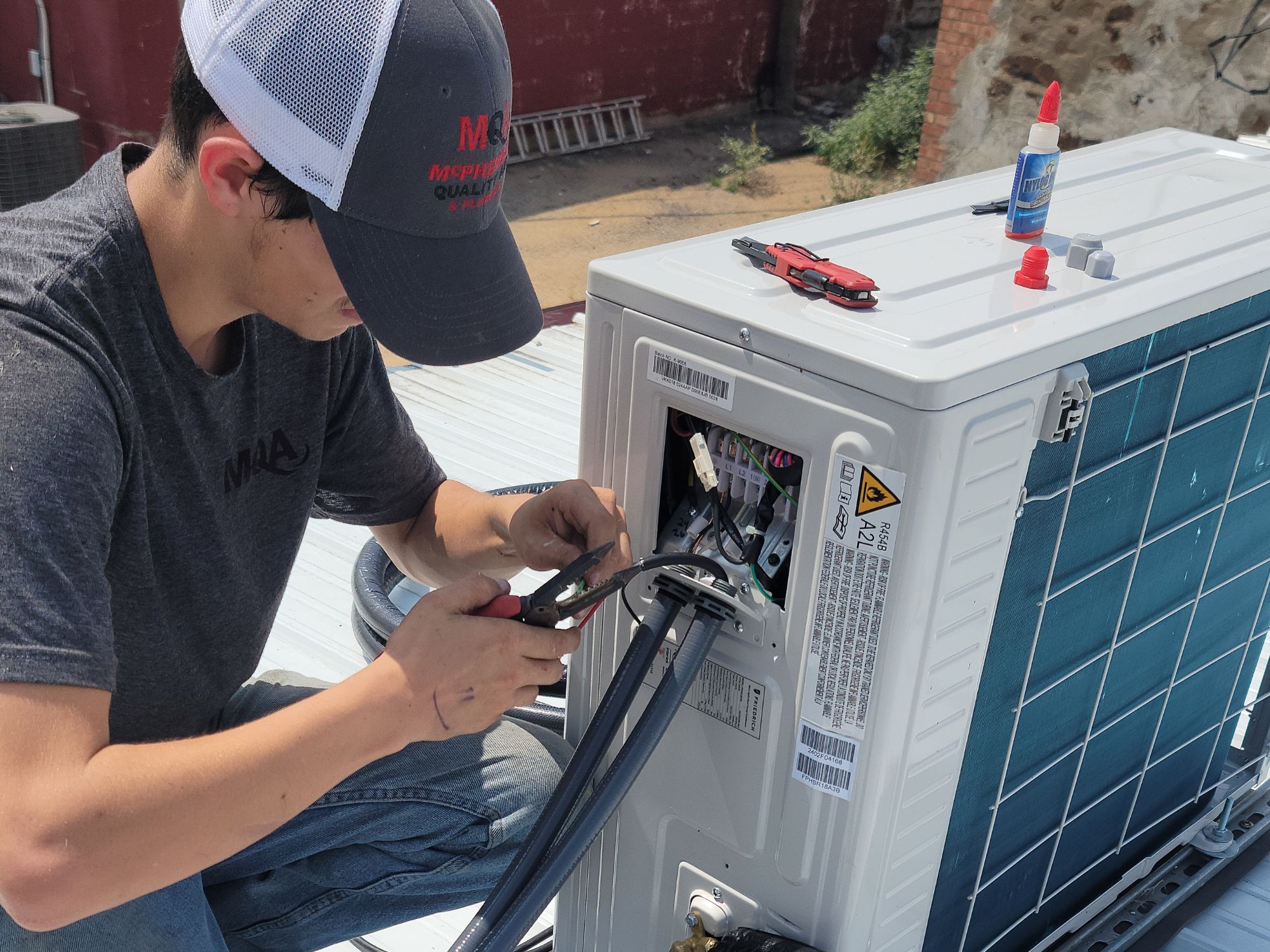
Installation is a very important consideration because professional installation is strongly recommended with many heat pumps.
Split-ductless heat pumps are the easiest to install, but doing so takes time and patience, even with good DIY skills. As a rough guide, contractors often work in pairs and would expect installation to take around 5 hours.
Air-source heat pumps for pool heating can be self-installed if you have the required electrical knowledge. Whole-house heat pumps are far more complex, typically requiring a couple of days to install. Unless you have a wealth of experience, it’s a job that’s probably best left to professionals. Several manufacturers warn that their equipment should only be installed by qualified technicians.
That’s also true with geothermal heat pumps. An initial survey will need to be conducted to determine whether the site is suitable, and then substantial groundwork or drilling will be required to install the loop. These pumps are often recommended as efficient solutions for new builds and large open plots. Installation in well-developed urban areas can be challenging.
FAQs
Now that you’ve had the opportunity to read about some of the key features and consider some of the best models on the market, you may have lingering heat pump questions. The following answers to some of the most common queries may help.
Heat pumps typically output three to four times more energy than they consume, so they use electricity very efficiently. Heat pump use reduces fossil fuel consumption compared to traditional alternatives. As with any heating or cooling system, heat pumps need proper management to maximize savings.
Air-source and split-ductless heat pumps can be damaged if they freeze, but many have internal heaters to prevent this. Properly installed geothermal heat pumps should not be affected because they are deep enough that the cold does not reach them.
Heat pump longevity is based on the type. Air-source and split-ductless last an average of 15 years, though it is not uncommon for them to last more than 20 years. The indoor unit of a geothermal heat pump can be expected to last 25 years or more, with 50 years usually quoted for the underground loop.
As with HVAC brands and HVAC systems, selecting the best heat pump should be based more on specifications than brand. That said, Daikin, Goodman, and Pioneer all perform consistently well in independent satisfaction surveys.
The Senville tri-zone heat pump and Friedrich single-zone heat pump are the most efficient heat pumps on our list. The Pioneer Diamante is also quite efficient, but it is only suitable for small spaces.
The biggest downside to a heat pump is that installation can be difficult or costly. If you’re an experienced DIYer purchasing a pump with a comprehensive installation kit, you might be fine. Sometimes, however, installation requires electrical work that’s better left to a professional. Some heat pumps also require professional installation as part of their warranty requirements.
.

